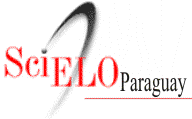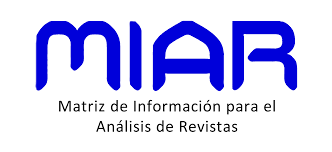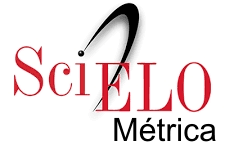Potential congenital transmission of Chagas disease in the second generation of young pregnant women who attended prenatal in the department of Cordillera, Paraguay
DOI:
https://doi.org/10.18004/mem.iics/1812-9528/2024.e22122404%20Keywords:
Chagas disease, vertical transmission, congenital Chagas, pregnant women, second generationAbstract
Trypanosoma cruzi is the causative agent of Chagas disease. In Paraguay, it is estimated that 165,000 people are infected and currently the main route of transmission is the congenital one, with a prevalence of 5% and about 400 infected children are born per year. The Department of Cordillera is an endemic area of the Eastern Region of the country, where the Chagas Prenatal Control Program was implemented in 1995. The aim of this study was to infer the potential congenital transmission of Chagas disease towards second generation pregnant women from the Department of Cordillera who attended their prenatal control in the period 2010-2012, 15 years after the implementation of the Prenatal Control Program. Of 9,588 pregnant women; 482 were seropositive (5%); 2.74% in the group aged 12 to 19 years, 4.93% aged 20 to 30 years, 8.03% aged 31 to 40 years, and 16.11% aged 41 to 48 years. To estimate the origin of second generation congenital transmission, the 72 seropositive women aged 12 to 19 years were taken into account and according to the database of their respective mothers, 61 mothers of the 72 were seropositive. With this información, it can be estimated that 85% of the transmission to second generation pregnant women aged 12 to 19 years was congenital showing a very significant congenital transmission in the study population. This information could help the National Chagas Program in strengthening the control of congenital transmission of Chagas disease in the country.
Downloads
References
World Health Organization. Chagas disease in Latin America: an epidemiological update based on 2010 estimates. Wkly Epidemiol Rec [Internet]. 2015 [cited 2023 Jul 28]; 90(6): 33-43. https://reliefweb.int/report/world/weekly-epidemiological-record-wer-6-february-2015-vol-90-no-6-pp-33-44-enfr
Meza Acosta G, Cerecceto Meyer H. Seroprevalencia de la enfermedad de Chagas en embarazadas del departamento de Cordillera en el período 2010-2016 y el comportamiento de la seroprevalencia después de 21 años de la implementación del Programa de control Prenatal de Chagas. Mem. Inst. Investg. Cienc. Salud [Internet]. 2019 [citado 20 Ago 2023]; 17(3): 10-19. http://scielo.iics.una.py/scielo.php?script=sci_arttext&pid=S1812-95282019000300010&lng=en&nrm=iso&tlng=es php?script=sci_arttext&pid=S1812-95282019000300010&lng=en&nrm=iso&tlng=es https://doi.org/10.18004/mem.iics/1812-9528/2019.017.03.10-019
Organización Panamericana de la Salud. Guía para el diagnóstico y el tratamiento de la enfermedad de Chagas. Washington, D.C.: OPS; 2018
Organización Panamericana de la Salud. La enfermedad de Chagas en las Américas: análisis de la situación actual y revisión estratégica de la agenda regional. Informe final, 14-16 de marzo del 2023, Medellín (Colombia) [Internet]. Medellín: Organización Panamericana de la Salud, Organización Mundial de la Salud; 2023. [citado 20 Ago 2023]. https://www.paho.org/es/documentos/enfermedad-chagas-americas-analisis-situacion-actual-revision-estrategica-agenda
Ministerio de Salud Pública y Bienestar Social. Guía de manejo de pacientes adultos con enfermedad de Chagas [Internet]. Ministerio de Salud Pública y Bienestar Social; 2021. [citado 20 Set 2023]. https://senepa.gov.py/wp-content/uploads/2021/07/ISG0001-PROTOCOLOS-adulto-1.pdf
Russomando G, Almiron M, Candia N, Franco L, Sánchez Z, de Guillen I. Implementación y evaluación de un sistema localmente sustentable de diagnóstico prenatal que permite detectar casos de transmisión congénita de la enfermedad de Chagas en zonas endémicas del Paraguay. Rev Soc Bras Med Trop. 2005; 38(Supl.2):49-54
Sánchez Z, Guillén L, Pineda D, Paredes B, V de Feltes C, Russomando G. Técnicas moleculares integradas a la vigilancia entomológica de vectores de la enfermedad de Chagas: Estudio del vector secundario Triatoma sordida en la Región Oriental del Paraguay. Mem. Inst. Investig. Cienc. Salud [Internet]. 2020 [citado 25 Set 2023]; 18(1): 76-83. http://scielo.iics.una.py/scielo.php?script=sci_arttext&pid=S1812-95282020000100076 php?script=sci_arttext&pid=S1812-95282020000100076 https://doi.org/10.18004/mem.iics/1812-9528/2020.018.01.76-083
Moncayo A, Silveira AC. Current epidemiological trends for Chagas disease in Latin America and future challenges inepidemiology, surveillance and health policy. Mem Inst Oswaldo Cruz. 2009 Jul: 104 Suppl 1: 17-30. https://pubmed.ncbi.nlm.nih.gov/19753454/
Ministerio de Salud Pública y Bienestar Social (MSP y BS). Servicio Nacional de Erradicación de Paludismo (SENEPA). Chagas. Ministerio de Salud Pública y Bienestar Social. https://www.mspbs.gov.py/senepa/chagas.html
Jannin J, Salvatella R. Estimación cuantitativa de la enfermedad de Chagas en las Américas. Montevideo: Organización Panamericana de la Salud; 2006
Russomando G. Transmisión congénita de la enfermedad de Chagas en el Paraguay. Mem. Inst. Investig. Cienc. Salud. 2009; 7(2):55-64
Paraguay. Ministerio de Salud Pública y Bienestar Social (MSP y BS). Dirección General del Servicio Nacional de Erradicación de Paludismo. Resolución S.G. N° 261/2023 por la cual se aprueba y declara de interés institucional la “Guía práctica para manejo de transmisión congénita de Chagas y Chagas crónico reciente infantil [Internet]. Asunción: MSP y BS; 2023. [citado 20 Sept 2023]. https://www.mspbs.gov.py/portal/27543/lanzan-primera-guia-de-manejo-del-chagas-congenito-y-cronico-reciente-infantil.html
Carlier Y, Torrico F. Congenital infection with Trypanosoma cruzi: from mechanisms of transmission to strategies for diagnosis and control. Rev Soc Bras Med Trop. 2003; 36(6):767-71
Ministerio de Salud Pública y Bienestar Social. Dirección General del Servicio Nacional de Erradicación de Paludismo. Paraguay refuerza la lucha contra la Enfermedad de Chagas con las primeras guías de manejo de la patología. [Internet]. 2021 https://senepa.gov.py/2021/07/09/paraguay-refuerza-la-lucha-contra-la-enfermedad-de-chagas-con-las-primeras-guias-de-manejo-de-la-patologia/
Meza G. Seroprevalencia de la enfermedad de Chagas en embarazadas del departamento de Cordillera antes y después de la implementación del control prenatal de Chagas en los periodos 1997 y 2011. Mem. Inst. Investig. Cienc. Salud [Internet]. 2016 [citado 20 Sept. 2023]; 14(3): 73-80. http://scielo.iics.una.py/scielo.php?script=sci_arttext&pid=S1812-95282016000300073 php?script=sci_arttext&pid=S1812-95282016000300073 https://doi.org/10.18004/mem.iics/1812-9528/2016.014(03)73-080
Zaidenberg M. La enfermedad de Chagas congénita en la Provincia de Salta, Argentina, años 1980-1997. Rev. Soc. Bras. Med. Trop.1999; 32(6):689-95
Carlier Y, Altcheh J, Angheben A, Freilij H, Luquetti AO, Schijman AG, et al. Congenital Chagas disease: Updated recommendations for prevention, diagnosis, treatment, and follow-up of newborns and siblings, girls, women of childbearing age, and pregnant women. PLoS Negl Trop Dis [Internet]. 2019 [cited 2023 Ago 20]; 13(10): e0007694. https://www.ncbi.nlm.nih.gov/pmc/articles/PMC6812740 . https://doi.org/10.1371/journal.pntd.0007694
Paraguay. Ministerio de Salud Pública y Bienestar Socia (MSP y BS). Servicio Nacional de Erradicación del Paludismol (SENEPA). Guía práctica para manejo de transmisión congénita de Chagas y Chagas crónico reciente infantil [Internet]. Asunción: MSP y BS, SENEPA; 2021. [citado 20 Ago 2023]; [citado 20 Ago 2023]; https://senepa.gov.py/wp-content/uploads/2021/07/ISG0001-PROTOCOLOS-infantil.pdf
Silveira AC, Rojas de Arias A, Segura E, Guillén G, Russomando G, Schenone H, et al. El control de la enfermedad de Chagas en los países del Cono Sur de América. Historia de una iniciativa internacional. 1991/2001. Uberaba: Faculdade de Medicina do Triângulo Mineiro; 2002.
Schenone H, Iglesias J, Schenone S, Contreras M.C. Infección chagásica congénita de segunda generación. Biol. Chil. Parasitol., 1987, 42: 71-73. [ Links ]
Schenone H, Gaggero M, Sapunar J, Contreras M.C, Rojas A. Congenital Chagas disease of second generation in Santiago, Chile. Report of two cases. Rev. Inst. Med. Trop. S. Paulo, 2001; 43 (4): 231-232.
Amorín B, Peréz L. Chagas congénito de segunda generación en Uruguay. Primer caso sintomático descrito en el país. Arch Pediatr Urug 2016; 87 (3): 245-252.
Piat GL, Almirón JF, Romano JR, Romano M. Chagas Congénito. Revisión de una enfermedad curable y subestimada. Revista de Posgrado de la VIa Cátedra de Medicina Junio 2009, N°193. Corrientes - Argentina.














